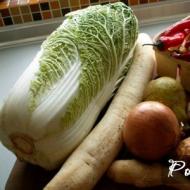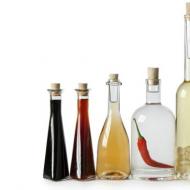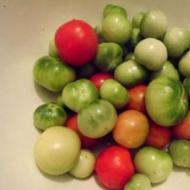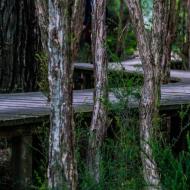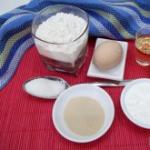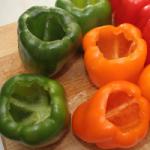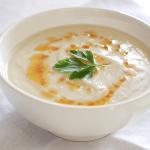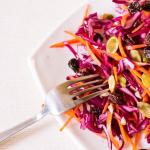
Broadleaf plants. Deciduous forest plants
The broadleaf forest is characterized primarily by a large variety of tree species. This is especially noticeable when compared with coniferous forest, with taiga. There are much more trees here than in the taiga - sometimes you can count up to a dozen. The reason for the species richness of trees is that deciduous forests develop in more favorable natural conditions than taiga. There can grow demanding to the climate and soil tree species that do not tolerate the harsh conditions of the taiga areas.
A good idea of the diversity of tree species of deciduous forests can be obtained if you visit the famous forest, which is called the Tula zaseki (it stretches from west to east in the southern part of the Tula region). Such trees as pedunculate oak, small-leaved linden tree, two types of maple - pigeon and field, common ash, elm, elm, wild apple tree, wild pear tree are found in the oak forests of Tula.
For deciduous forests is characterized by the fact that the various tree species included in its composition have different heights, forming as it were several groups in height. The tallest trees are oak and ash, the lower ones - Norway maple, elm and linden, even lower ones - field maple, wild apple and pear. However, trees, as a rule, do not form distinctly expressed tiers, well delimited from each other. Oak usually dominates, the remaining tree species often play the role of satellites.
Rich in broad-leaved forest and species composition of shrubs. In the Tula abatis, for example, there are hazel, two species of euonymus — warty and European, forest honeysuckle, buckthorn brittle, briar and some others.
Different types of shrubs vary greatly in height. Hazel bushes, for example, often reach a height of 5 - 6 m, and honeysuckle bushes are almost always below human growth.
In the broad-leaved forest is usually well developed grass cover. Many plants have more or less large, wide leafy plates. Therefore, they are called oak groves. Some of the herbs found in oak forests, always grow as single specimens, never forming dense thickets. Others, on the contrary, can almost completely cover the soil in a large space. Such massive, dominant plants in the oak forests of Central Russia are most often snyt ordinary, hairy sedge and yellow green.
Broad-leaved trees have wide and flat leaves - in which the thickness is much less than the length and width, usually falling once a year. This group includes maple, beech, ash, eucalyptus, various shrubs. In addition to classification by type of leaves, trees are divided according to the leaf life time - deciduous and evergreen. Deciduous trees have a clear change of leaf cover: all the leaves on the tree lose their green color and fall off, for some time (in winter) the tree stands without leaves, then (in spring) new leaves grow from the buds. Evergreen trees do not have a clear change of leaf cover: the foliage is on the tree at any time of the year, and the change of leaves occurs gradually, throughout the life of the tree.
In areas with long, cold winters, deciduous trees shed their leaves in the fall. In the tropics, where the longitude of daylight varies insignificantly throughout the year, the leaves do not fall for the winter.
Dropping leaves helps save energy because in winter there is too little sunlight for photosynthesis in the leaves. In the fall, the trees become dormant. The movement of water and nutrients through the vessels inside the trees stops, as a result, the leaves dry out and fall off. However, by this time the plant has already managed to accumulate enough nutrients to ensure the budding of the buds and the growth of new leaves in the spring. The green pigment chlorophyll is destroyed in the fall, and other pigments become well visible, which give the autumn leaves a yellow, red and red color.
Oak
Oak is the main source of deciduous forests in Europe. In the European part of Russia, pedunculate oak (Quergus robur) grows - one of our most durable and large trees. However, in plantings, with the exception of parks, this plant is quite rare, although for a number of properties it has no equal. In particular, pedunculate oak has the highest recreational stability and is extremely drought-resistant.
On private sites it is used in single landings. It tolerates moderate pruning, so you can form very beautiful tapeworms with spherical, obovate, and even tent-shaped crown.

Elm
Two species of the elm family naturally grow in the forests of the non-chernozem zone: smooth elm (Ulmus laevis) and c. rough (U. scabra). These are large trees that make up the dominant tier of deciduous and coniferous-deciduous forests. The use of these species for landscaping in recent decades has been hampered by a widespread disease - the Dutch elm disease.
Ash Ash
Ash reaches a height of 30-40 m.
His trunk is straight. The bark is light gray, darkening with age. The crown is very friable, openwork, letting through a lot of light. The root system is powerful, strongly branched. Ash is very demanding on the soil, but salinity is better than others. It is one of the main breeds of field breeding, it is photophilous, more shade tolerant in youth, heat-loving and does not tolerate spring frosts, grows almost throughout the European part of the Russian Federation, often mixed with other species: oak, hornbeam, maple, sometimes forms pure or nearly clean stands. Inflorescences paniculata, dense.
The flowers of these trees are usually dioecious, less often bisexual, but sometimes dioecious trees are found. Ash blooms in May before blooming. Pollinated by wind.
Fruits are single-seeded winged, clustered in brushes, ripen in October-November and fall in winter or early spring.
Forest beech (there is also eastern beech) - a tree up to 40 meters high and up to one and a half meters in diameter with light gray bark and elliptical leaves. It occupies large spaces in Western Europe, in our country it grows in the western regions of Ukraine, Belarus and the Kaliningrad region. Eastern beech is common in the Caucasus at an altitude of 1000-1500 meters above sea level, in the Crimea - at a level of 700-1300 meters, forming a belt of beech forests.
The main value of the beech is its fruit - nuts, ripening in September - October. They contain up to 28 percent of fatty semi-drying oils, up to 30 percent of nitrogenous substances, starch, sugars, malic and citric acids, tannins, up to 150 mg% of tocopherols and poisonous alkaloid phagin, which decompose when toasted nuts, which as a result become harmless to humans . A coffee substitute is prepared from the nuts, the ground nuts in the form of flour are added to the usual flour when baking various bakery products. Beech wood is very valuable and decorative.

Maple
Various species of maple trees are widely distributed in deciduous forests. More often than others, it is found Norway maple, or common maple, - a tree up to 20 meters high, with gray bark and five-pasted large dark green leaves. Distributed in the European part of the country, mainly in the western and central parts, and in the Caucasus. Its leaves and shoots can be used for medicinal purposes. It is established that the leaves contain up to 268 mg% of ascorbic acid, alkaloids and tannins. Infusion or decoction of the leaves has a diuretic, choleretic, antiseptic, anti-inflammatory, wound healing, analgesic effect. In folk phytotherapy, it was used for kidney stones, jaundice, as an antiemetic and tonic. Crushed fresh leaves were applied to the wounds for healing.
Oak and beech, elm, maple and ash are very valuable tree species, the wood of which is considered a high-quality building material, and the bark is used for household and medical needs.
A forest is a plant community dominated by woody plants. Types of forest plant communities have a specific species composition, which includes one or more dominant (dominant) species. It is by the dominant trees among the forest plants that its type can be determined. Coniferous, broad-leaved, small-leaved and mixed forests are distinguished. In the forests there are such basic tiers: woody (1-2 tiers), shrub, grass, lichen-moss.
The largest areas in Russia are coniferous forests, stretching far to the north and a wide strip from west to east. Coniferous forests are represented by gymnastics: spruce, pine, larch. Pine forests grow on soils of various types, including poor sandy. And for spruce forests need moist, rich in humus soil. Since the pine is a light-loving plant, its needles are located on the upper branches of the tree. Therefore, pine forests are very light. Spruce forests, on the contrary, are dark and gloomy, because with the close arrangement of the branches of shade-tolerant fir trees, little light penetrates into the spruce thicket. In the European part of Eurasia, the prevailing species of spruce forest is the European spruce, and in the east beyond the Ural Mountains it is replaced by Siberian spruce. Accordingly, common pine is common in pine forests in the west, and Siberian pine (cedar) grows to the east. In Siberia, coniferous forests are mainly formed by larch, and Siberian larch grows in the western part of Siberia, and Daurian larch predominates in the eastern and Far East coniferous forests. Larch is a light-loving plant, it grows on dry soils, rarely in swamps.
To the south of coniferous forests in the middle zone of Eurasia, deciduous forests grow, being the conditional northern boundary of the steppes. Deciduous forests occupy about 1/5 of the forest area in Russia. The dominant species of woody plants of forests is oak. Therefore, often deciduous forests of southern latitudes are called oak forests. In the regions that are located to the north, along with oaks, other deciduous trees grow - maple, linden, ash, elm.
Small-leaved forests occupy smaller areas than broad-leaved ones. They consist mainly of aspen and birch. These trees have small leaves and are the first to occupy free areas after deforestation or forest fires. These are the most light-loving woody plants. Sunlight through small leaves easily penetrates to the very earth, in connection with which, small-leaved forests are light, and their grass cover is well developed.
Rarely do forests consist of any one type of tree. One tree species can gradually crowd out another. Thus, the spruce forest can change the pine when replacing the pines with more shade-tolerant spruces. Often there are mixed forests. They can include coniferous evergreen trees (spruce, pine) and deciduous (linden, oak). Small-leaved forests are also rare, as more often birch and aspen are an admixture to other types of forest plants.
Our review covers, first of all, tree species growing in the central regions of the European part of Russia, and we provide a far from complete list of the species and forms of the introduced species. One would expect that such diversity should be ensured by the creation of landscape compositions that are different in design and harmonious in terms of embodiment; however, artisans who call themselves landscape architects but do not have special education, replicate in a different combination a dozen variants of computer-generated projects using their stereotypes. programs.
In the European part of Russia, one of the main forest-forming species is small-leaved linden, or heart-shaped (Tilia cordata). The characteristic black Central Russian manor of the XIX century was linden alleys, giving it a unique majestic monumental flavor. The remains of such alleys, which are huge hollow trees, have been preserved everywhere to the present day, which indicates a very long durability of linden. This tree, possessing extremely soft wood, is poorly resistant to the penetration of pathogens of rot, but only the core of the trunk is affected. Powerful blocking reactions do not allow rot to penetrate the vital sapwood, therefore old linden trees with hollow, empty trunks inside are quite viable and, most importantly, very stable.
It is possible to use linden for decorative and reactionary purposes very widely. This plant tolerates pruning superbly and in addition to walkways, single and group plantings of the trellis type. The linden has a high shade tolerance, it can be planted on shaded areas (near the high walls of the sun-covering buildings, deaf fences, under the canopy of trees, etc.).


Have a l. small leaf and negative features, first of all it is susceptibility to disease. Therefore, when buying planting material, you must ensure that there are no signs of disease. Planted plants should also be subject to regular forest pathology examination in order to take timely measures to combat diseases in the early stages of their development.
Other types of linden can be used, in particular l large leaf (T. platyphyllos), naturally growing in Western Europe. The long-term experience of using this breed in gardening of the Moscow region speaks about a number of its advantages in comparison with l. small-leaved. First of all, it is a more beautiful appearance in the alleys and group plantings and a higher resistance to diseases and pests.
The linden requires good soil fertility, therefore, when planting it, land mixtures with a high content of humus should be used or plots with medium and heavy soils should be selected. Of all the broad-leaved species, this tree is the most moisture-loving and should be provided with a sufficient amount of soil moisture.

Oak
Oak is the main source of deciduous forests in Europe. In the European part of Russia grows pedunculate oak (Quergus robur) - one of our most durable and large trees. Nevertheless, in plantings, with the exception of parks, this plant is quite rare, although for a number of properties it has no equal. In particular, the pedunculate has the highest recreational stability and is extremely drought-resistant.
On private sites it is used in single landings. It tolerates moderate pruning, so you can form very beautiful tapeworms with spherical, obovate, and even tent-shaped crown. But it should be borne in mind that this breed grows slowly at a young age, so it is advisable to use large-sized seedlings 2.5-3 m in height with the crown already primary formed in the nursery.

In park plantings, you can create a biogroup of pedunculate with the calculation of the breeding of this breed in the first tier of the stand. This species is very promising for replacement plantings under ripe and overmature trees.
To create wood groups in the semi-open spaces and in the alleys it is better to use d. red (Q. rubra) - introductions of North American origin. This very spectacular tree has a number of advantages as compared with the pedunculate one: undemanding to soil fertility, the ability to withstand its acid reaction (but it does not tolerate calcareous and moist soils), resistance to pests and diseases, including powdery mildew. the scourge of our oaks, resistant to smoke and gases. In addition, D. red effectively reduces traffic noise and has good phytoncidal properties. The long-term experience of growing in biogroups of mixed composition shows that the red very well with the spruce and spruce maple, and a number of other species of woody plants.

Elm
In the forests of the non-chernozem zone, two species of the elm family naturally grow: elm smooth (Ulmus laevis) and at. rough (U. scabra). These are large trees that make up the dominant tier of deciduous and coniferous-deciduous forests. The use of these species for landscaping in recent decades has been hampered by a widespread disease - the Dutch elm disease. Nevertheless, due to the unique structure of the escape system, c. rough is recommended for creating screen-type trellis fits. In plants of this species, with the help of trimming and garters to the trellis, fan-shaped crowns are easily formed, thanks to which you can isolate yourself from closely-spaced tall buildings.
For landings of other purposes it is better to use resistant to the Dutch disease. at. squat (U. pumila), naturally growing in Eastern Siberia and the Far East.

Ash
(Fraxinus excelsior) is a typical plant of the dominant tier of deciduous forests of chernozem regions. North of Moscow in the forests of natural origin almost never occurs, but in urban plantings - one of the most common and favorite trees. This is explained by the relatively easy tolerance of transplant seedlings, rapid growth and, most importantly, a very high ability to regenerate. Even after the barbaric pruning, when all the branches are cut down and only a bare, sticking up stem in the form of a column is cut down, the shoot system is quickly restored. Ash can withstand even a few such deaths for most other species during its life. Such methods of pruning, of course, greatly reduce the duration of his life, so this example is by no means a recommendation for the care of ash trees and only shows the potential of the plant.
Use me. Ordinary can be used in almost all types of planting: single, avenue, decorative and park groups, both mixed and pure composition. For single and group plantings in the foreground, it is better to choose its decorative forms with a spectacular crown.
Introduced species of ash are also suitable for creating decorative compositions. The most famous introduced in our culture in the late XIX century i. American (F.americana) and i. fluffy, or pennsylvania (F. pubescens), also having decorative forms.
The disadvantages of all types of ash include poor tolerance of late spring frosts and low resistance to pests and diseases. After frosts, the crown of ash is quickly restored, and to prevent the multiplication of pests and the development of diseases, a regular forest pathology diagnosis is needed, on the basis of which decisions are made on measures for the further care of plants.

In addition to widespread in the forests of Europe norway maple (Acer platanoides), in deciduous forests of the black earth part of Russia, two more species of maple naturally grow: k. Tatar (A. tataricum) and k. field (A. campestre).
Tatar maple is a large shrub or small tree, up to 9 m tall, well-formed. The leaves, in contrast to the leaves of the. Ostrolistochnogo, whole or slightly lobed. In autumn, their yellow and reddish coloring is unusually spectacular. This species is very elegant in May, during flowering, and in June, when the fruit of the lionfish begins to turn dark red. Tatar maple can be used in single and group plantings, as well as as undergrowth under large trees, improving the soil for larches, pines, birches, oaks and other trees of the first tier. It tolerates a haircut, so it is suitable for creating high (up to 4 m) hedges.
Field maple - the plant is more thermophilic and more demanding on the soil than the k. Keratly and the k. Tatar. It reaches a height of 15 m, grows fast and is durable. Widely used in landscaping in black earth areas. It is used in the alley, single and group planting, as well as as second-tier trees in forest parks.

Norway maple is the most popular and famous maple forest in Europe. A tree that grows up to 30 m in height, with a dense wide-round crown. Large sizes, beautiful dense crown, slender trunk, ornamental foliage - qualities for which this breed is highly valued in green building. Norway maple is one of the best tree species for solitary, allein plantings and colorful powerful groups. Especially effectively his autumn outfit stands out against the background of conifers.
The fertility and soil moisture is quite demanding, it grows quickly, shade-tolerant. Well withstand transplantation and urban conditions, wind resistant. These qualities are the basis for making landscape decisions and the choice of technologies when using this tree species in gardening.
All of the above refers to the typical form of the hollow. For centuries of use of this species in culture, a large number of decorative forms were selected, differing in color and shape of foliage, nature and shape of the crown, and features of growth.

Tree species that dominate in plant communities are called edificators, which means “medium-forming”. They create the plant environment to which the plants of the subordinate tiers are forced to adapt: shrubs, grasses, mosses. In it, animals find their niche, including birds and insects, fungi develop, and not only tinder breaking wood, but also mycorrhiza-forming plants — very necessary plants and well known to us in many edible species. Creating such a natural environment on your site is the goal you should strive for, and you should start with trees.
The first step - in order to preserve the existing wood vegetation in future design decisions should be carried out an inventory of its elements. Then follows the design and planting of trees. At the next stage, compositions are made of shrubs and herbaceous perennials. But these options are beyond the scope of this article and are the subject of a separate discussion.

Sergey Shkarinov, Candidate of Agricultural Sciences
Broad-leaved species are more demanding to heat and moisture than conifers. In the summer, trees form a huge amount of leaves with a large surface, evaporating a lot of moisture. Therefore, an indispensable condition for the growth of deciduous forests - an abundance of precipitation in the summer. Broad-leaved forests spread in the west of the European part of the former USSR, wedging out to the Urals, and in the Far East in Primorsky Krai.
The broadleaf forest is characterized by a complex longline structure of the stand. Usually there are 3 tiers. In the forests of the European part of the former USSR, the first tier consists of large trees - oak, linden, maple, ash. Under their crowns grow trees of the second size - wild apple and pear, bird cherry, hawthorn. Below - large shrubs - buckthorn, spruce, viburnum, etc. In the ground cover there are almost no mosses or lichens, since a thick layer of fallen leaves hinders their development. They are replaced by a variety of perennial herbs, usually broadleaf. The above-ground part of them dies off for the winter, and under the ground they form rhizomes, tubers, and bulbs, which allows them to bloom quickly in early spring, until the trees are light and the leaves of trees have developed. Wind-pollinated trees and shrubs, such as oak, hazel-tree, alder, also bloom early, until the leaves interfere with the flow of pollen. Insects plants bloom in different periods.
Different plant parts are of medicinal importance: in early spring, the bark from oak and viburnum is harvested, primrose and medunits are harvested, in summer - lime and elderberry flowers, hawthorn flowers, in autumn - elderberry fruits, hawthorn.
The broadleaf forest is characterized primarily by a large variety of tree species. This is especially noticeable when compared with coniferous forest, with taiga. There are much more trees here than in the taiga - sometimes you can count up to a dozen. The reason for the species richness of trees is that deciduous forests develop in more favorable natural conditions than taiga. There can grow demanding to the climate and soil tree species that do not tolerate the harsh conditions of the taiga areas.
A good idea of the diversity of tree species of deciduous forests can be obtained if you visit the famous forest, which is called the Tula zaseki (it stretches from west to east in the southern part of the Tula region). Such trees as pedunculate oak, small-leaved linden tree, two types of maple - pigeon and field, common ash, elm, elm, wild apple tree, wild pear tree are found in the oak forests of Tula.
For deciduous forests is characterized by the fact that the various tree species included in its composition have different heights, forming as it were several groups in height. The tallest trees are oak and ash, the lower ones - Norway maple, elm and linden, even lower ones - field maple, wild apple and pear. However, trees, as a rule, do not form distinctly expressed tiers, well delimited from each other. Oak usually dominates, the remaining tree species often play the role of satellites.
Rich in broad-leaved forest and species composition of shrubs. In the Tula abatis, for example, there are hazel, two species of euonymus — warty and European, forest honeysuckle, buckthorn brittle, briar and some others.
Different types of shrubs vary greatly in height. Hazel bushes, for example, often reach a height of 5 - 6 m, and honeysuckle bushes are almost always below human growth.
In the broad-leaved forest is usually well developed grass cover. Many plants have more or less large, wide leafy plates. Therefore, they are called oak groves. Some of the herbs found in oak forests, always grow as single specimens, never forming dense thickets. Others, on the contrary, can almost completely cover the soil in a large space. Such massive, dominant plants in the oak forests of Central Russia are most often snyt ordinary, hairy sedge and yellow green.
Almost all the herbaceous plants living in oak forests are perennials. Their life span is often measured by several decades. Many of them are poorly propagated by seeds and support their existence mainly due to vegetative propagation. Such plants, as a rule, have long above-ground or underground shoots, which are able to quickly spread in different directions, capturing new territory.
The above-ground part of many representatives of the broad-leaved oak forest is dying in autumn, and only the rhizomes and roots in the soil winter. They have special renewal buds, from which new shoots grow in spring. However, among the species of oakwood there are some that have the above-ground part that remains green in winter. The plants of this kind include hoof, hairy sedge, Zelenchuk.
In the coniferous forests a large role is played by shrubs, especially blueberries and lingonberries. In the deciduous forest of shrubs, on the contrary, usually does not happen at all, they are absolutely not characteristic of our oak forests.

Among the herbaceous plants developing in Central Russian oak forests, so-called oakwood ephemeroids are of particular interest. An example of them can be different types of crested insects, goose onions, buttercup anemone, spring scurf. These small, relatively stunted plants surprise us with their extraordinary “haste”. They are born immediately after the snow melts, and their shoots sometimes make their way even through snow that has not yet melted. This time of year is pretty cool, but the ephemeroids nevertheless develop very quickly. After a week or two after their birth, they are already in bloom, and after another two or three weeks their fruits ripen with seeds. The plants themselves turn yellow and lie down on the ground, and then the aboveground part of them dries out. All this happens at the very beginning of summer, when, it would seem, the conditions for the life of forest plants are most favorable - there is enough heat and moisture. But ephemeroids have their own special “development schedule”, not the same as many other plants - they always live only in spring, and by the summer they completely disappear from the vegetation cover. Early spring is most favorable for their development, because at this time of the year, when the trees and shrubs have not yet dressed foliage, it is very light in the forest. Moisture in the soil during this period is enough. And a high temperature, such as in summer, is completely unnecessary for ephemeroids.
All ephemeroids are perennial plants. After the above-ground part dries out at the beginning of summer, they do not die. In the soil, live underground organs are preserved - in some tubers, in other bulbs, in the third more or less thick rhizomes. These organs serve as containers for spare nutrients, mainly starch. It is through the pre-stored “building material” that stems with leaves and flowers develop so quickly in spring.
Ephemeroids are characteristic of our Central Russian oak forests. They have a total of up to a dozen species. Their flowers have a bright beautiful color - purple, blue, yellow. When there are many such plants and they all bloom, a colorful colorful carpet is obtained.
In addition to herbaceous plants, mosses are also found in oak forests on soil. However, in this respect, oak forests are very different from taiga forests. In the taiga, we often see moss on a solid green carpet. In oak forests this never happens. Here, the role of moss is very modest - they are occasionally found in the form of small spots on heaps of earth, thrown away by a mole. It is noteworthy that in the oak forest there are common species of mosses - not at all those that form a solid green carpet in the taiga. Why is there no moss cover in the oak? One of the main reasons is that leaf litter depresses the mosses, which accumulates on the soil surface in the broad-leaved forest.




